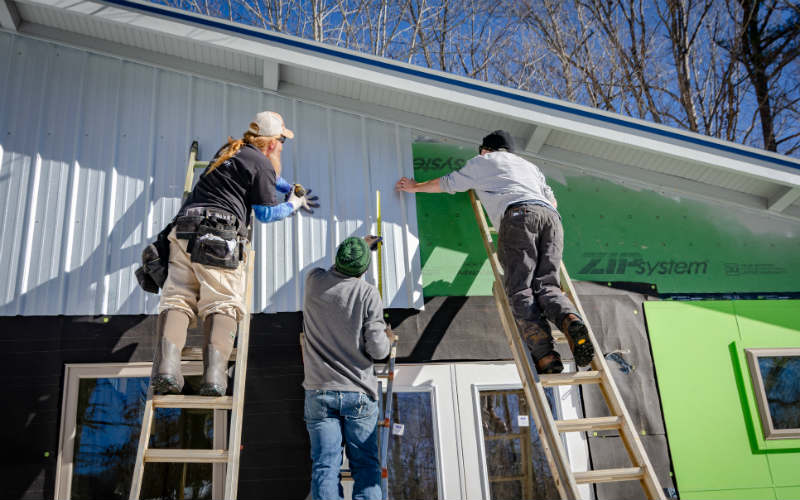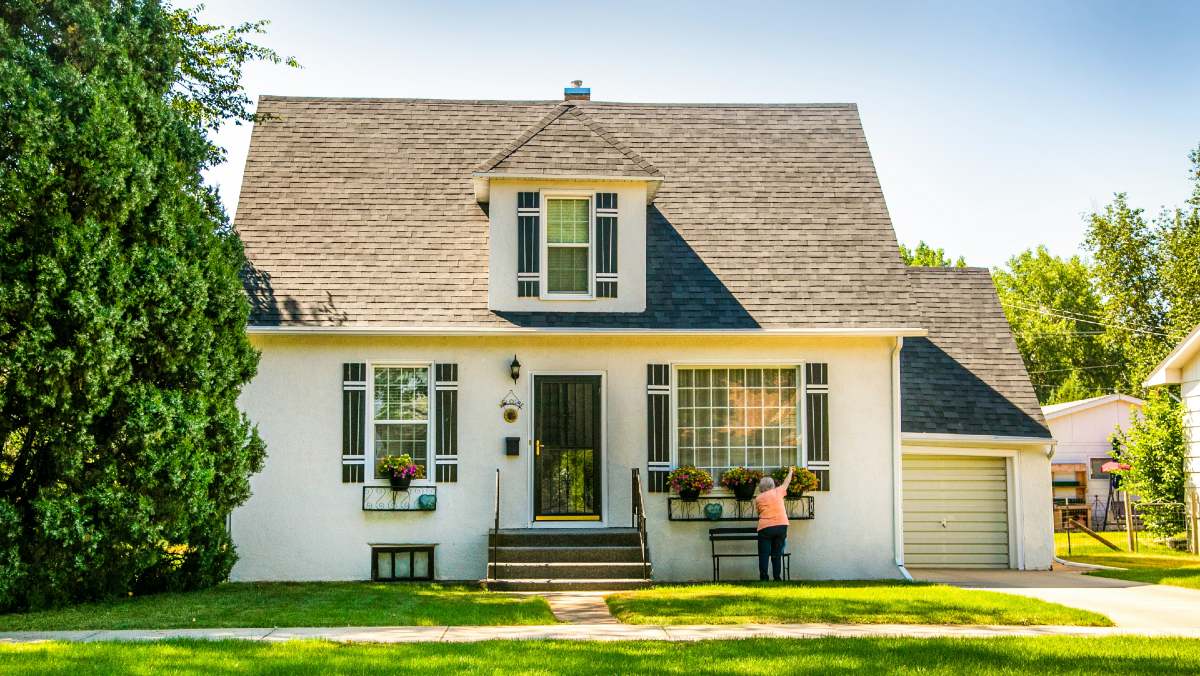One method some buyers are turning to is rent-to-buy, but these schemes are inherently risky.
Here, we’ll break down how rent-to-buy schemes work, what the risks are, and what you need to consider before entering a rent-to-buy scheme.
Buying a home or looking to refinance? The table below features home loans with some of the lowest interest rates on the market for owner occupiers.
| Lender | Home Loan | Interest Rate | Comparison Rate* | Monthly Repayment | Repayment type | Rate Type | Offset | Redraw | Ongoing Fees | Upfront Fees | Max LVR | Lump Sum Repayment | Extra Repayments | Split Loan Option | Tags | Features | Link | Compare | Promoted Product | Disclosure |
|---|---|---|---|---|---|---|---|---|---|---|---|---|---|---|---|---|---|---|---|---|
5.54% p.a. | 5.58% p.a. | $2,852 | Principal & Interest | Variable | $0 | $530 | 90% |
| Promoted | Disclosure | ||||||||||
5.49% p.a. | 5.40% p.a. | $2,836 | Principal & Interest | Variable | $0 | $0 | 80% |
| Promoted | Disclosure | ||||||||||
5.64% p.a. | 5.89% p.a. | $2,883 | Principal & Interest | Variable | $250 | $250 | 60% |
| Promoted | Disclosure | ||||||||||
5.64% p.a. | 5.89% p.a. | $2,883 | Principal & Interest | Variable | $248 | $350 | 60% |
| Disclosure |
What is rent-to-buy?
Rent-to-buy schemes (also called rent-to-own schemes) are where renters are given the option of buying the property they’re renting, usually after three to five years, at a pre-agreed price. This pre-agreed future price is usually inflated to cover any potential property price rises.
On top of paying rent during the rental period, tenants often also have to pay an additional fee for the option of buying the property at the end of their lease term. In some cases, renters may also be charged a non-refundable deposit and other outgoings an owner-occupier would typically pay for, such as building maintenance, stamp duty and insurance. These costs are then deducted from the final sale price if they choose to purchase the property.
A 2016 report by the Consumer Action Law Centre found that most people who enter a rent-to-buy scheme are usually lower income households who aren’t able to take out a mortgage with a mainstream lender because they either don’t have a big enough deposit, can’t afford the mortgage repayments, or have a bad credit history.
The consumer advocacy organisation also said it has seen “no examples”of successful rent-to-buy deals.
“These schemes do not enable people who could otherwise not buy a property to achieve home ownership.
“They are extremely financially risky and the legal protections for buyers are grossly inadequate.”
How do rent-to-buy schemes work?
Rent-to-buy schemes have two phases: the rent stage and the purchase stage.
Rent phase
Rent-to-buy programs are few and far between in Australia, with only a few developers and companies offering them. Once you’ve found a rent-to-buy program and identified the property you want, you then sign a contract or lease agreement.
Some rent-to-own contracts require a non-refundable deposit to be paid. Rent-to-own schemes also require the tenant to pay an ‘option to buy fee’ on top of their regular rental payments. This ‘option to buy fee’, which can amount to tens of thousands of dollars over the lease term, is then deducted from the purchase price of the property. However, if you decide not to go through with the purchase of the property or you are unable to, that money will not get refunded to you.
Sometimes, this option-to-buy fee will be built into the regular rental payment, so you’re paying far more than the market rent for that area.
Rent-to-own schemes often also require the tenant to pay for outgoing costs such as insurance, maintenance, and stamp duty during the renting phase. This money is also not refundable if you decide not to go through with the purchase of the property.
During the rent phase, you have no legal right in the title to the property. Even missing one rental payment can result in having the contract terminated and losing all the money you’ve spent.
Buy phase
After the rental period has come to an end and you decide to go through with the purchase of the property, you’ll be required to take out a home loan from a mainstream lender to buy the home.
The purchase price of the property will be the price that was agreed upon at the start of the rental period, and the extra ‘equity’ you’ve poured into the home during the rental phase will then be deducted from the purchase price.
If you get approved for a home loan, the title of the property will be transferred to your name and you become the legal property owner. Then it’s just a matter of paying off the mortgage.
How does Assemble’s model differ from traditional rent-to-buy models?
Property developer Assemble’s 'rent-with-the-option-to-buy’ model is different from traditional rent-to-buy schemes in that renters are not obligated to purchase the property at the end of the renting period.
Under the Assemble Futures model, any rent paid is not applied to the deposit or purchase of the property and renters can exit the lease after the first 12 months or decide not to purchase the property without financial penalty. This is why Assemble’s rent-with-the-option-to-buy model is permitted in Victoria, where traditional rent-to-buy schemes are banned.
Properties are targeted towards low to moderate-income households with an income starting at $60,000. The purchase price is fixed upfront and residents pay market value rent. Residents also have the option of taking advantage of free financial coaching.
Are rent-to-buy schemes legal in my state?
The laws surrounding rent-to-buy schemes vary from state to state, but they are banned in a few states because of their high risk, which should probably tell you all you need to know about using one.
Consumer Action’s report said the vague legislation surrounding rent-to-buy schemes puts buyers at risk.
“Overlapping laws can make legal requirements and obligations unclear. Gaps in the law can leave people with limited or no legal protections if things go wrong,” the report said.
“The effectiveness of legal protections varies depending on the people involved and the nature of the transaction.
“This legal uncertainty, coupled with a lack of independent legal advice, is why the risks of these schemes are so significant, particularly for buyers.”
The Consumer Action Law Centre has recommended they be banned in all states and territories, but so far only Victoria and South Australia have banned them.
Victoria
In 2019, the Victorian State Parliament passed new laws banning rent-to-buy and vendor finance schemes.
“The spruikers that promote these types of agreements are very good at playing on families’ dreams of owning their own home,” said Consumer Action CEO, Gerard Brody.
“Vendor finance and rent-to-buy schemes are touted as a cheaper and easier option for people who otherwise may not be able to afford to enter the housing market. The reality is that they are far from it.”
Under the new laws are provisions that allow people who have been previously signed up to rent-to-buy or vendor finance schemes to apply to the Victorian Civil & Administrative Tribunal (VCAT) to have the agreements terminated and recover their money.
South Australia
In South Australia, only the South Australian Housing Authority (SAHA) are legally permitted to offer rent-to-buy contracts. SAHA currently do not offer any rent-to-own programs.
“If you are looking at an arrangement with someone other than SAHA, it is likely that the contract is not legally binding in South Australia,” the government warning reads.
Risks of rent-to-buy
As you may have surmised by now, rent-to-buy schemes are inherently risky. According to Consumer Action’s report, these are the biggest risks of rent-to-buy schemes for buyers and vendors.
Risks for buyers
The buyer isn’t the legal owner until they successfully take out a home loan
One of the biggest risks of rent-to-buy schemes is that the buyer isn’t the legal owner until they have successfully applied for a home loan and the title of the property is transferred into their name.
“Because buyers do not seek independent legal advice, they do not understand this significant legal risk,” the Consumer Action report said.
Deals are unaffordable to begin with
Consumer Action says most rent-to-buy deals they’ve seen were “destined to fail” from the start because they stretch buyers who apply for these types of schemes beyond their financial limits.
“Buyers are typically on low incomes, often reliant on Centrelink payments, and may have significant debts,” the report said.
“Many buyers who do not qualify for mainstream finance cannot afford an overpriced property at a high interest rate plus outgoings.”
Refinancing is usually impossible
According to the Consumer Action report, people who have signed up to rent-to-buy schemes because they couldn’t obtain a mainstream mortgage in the first place will find it “virtually impossible to refinance”.
This is either because the buyer hasn’t built up enough ‘equity’ in the home and can’t take out a home loan, or because their financial situation hasn’t improved enough to be eligible for a mainstream home loan.
Since they can’t refinance, a buyer that’s struggling to meet the repayments may feel the need to move out, in which case the contract is terminated and they lose all the money they’ve poured into the property.
Hidden costs
Consumer Action says there are often significant costs buyers may not be aware of when signing up to a rent-to-buy deal, such as maintenance, repairs, and even stamp duty and capital gains tax, which would typically be covered by the owner in a normal renting scenario.
If the renter never manages to successfully buy the home, they can lose this money.
Missing just one payment risks everything
If you miss just one payment, the normal protections that come with a mortgage or residential tenancies laws like eviction procedures or hardship measures don’t apply, and the buyer can have their contract terminated and lose all the money they’ve spent so far.
The purchase price of the property is inflated
When a buyer signs up for a rent-to-own scheme, the final purchase price of the property is set at the beginning. While this may protect the buyer from potential future house price rises, Consumer Action’s report found the final sale price is usually “inflated” well above market values, with one case study reporting their property was actually worth up to $46,000 less than the agreed price.
Not only is the price inflated, if the market falls you risk paying even more for the property than what it’s worth.
First home buyer loses $150k in rent-to-buy scheme

The then 22-year-old used a rent-to-buy scheme to purchase her first property with her partner in 2008 after the birth of their first child.
“We didn’t qualify for a bank loan at the time and the way the scheme was explained to us, it was simple,” she told Savings.com.au.
“All we needed to do was make repayments for a year or so and then we’d be able to show the bank we could maintain the home loan repayments.”
She said she understood how the rent-to-buy process worked, but didn’t seek legal representation for the contracts which they were advised to do.
It all went wrong when they tried to take out a mortgage from a mainstream lender to buy the home at the end of the rental period.
“A couple of years into the contract, we tried to get traditional finance. Unfortunately due to the Global Financial Crisis, we were not approved as we had no savings to account for given the majority of our income was going on the loan and childcare,” she said.
They sought the advice of a lawyer who helped them terminate the contract, but they still lost over $150,000 that they had spent in option to buy fees and other outgoing costs.
“One positive side to this story is that our lawyer told us whenever you’re ready to purchase the traditional way make sure to get in contact with me. A few years later we were lucky enough to do this all thanks to his help in the first instance.
“It’s good to know despite losing a lot of money and heartache that there are some good people out there still.”
She says she would advise anyone looking to use a rent-to-buy scheme to do their research first.
“I tend to give advice to anyone considering such an agreement to do their due diligence and check with the right channels prior to signing an agreement.”
What to consider before entering a rent-to-buy scheme
If you’re still considering entering a rent-to-buy scheme after reading all of the above, you’re either incredibly brave or very stupid. With that said, some rent-to-own schemes like Assemble’s ‘rent-with-the-option-to-buy’ model could potentially work because renters are not obligated to purchase the property and can exit the contract without financial penalty.
But before you sign any rent-to-buy contract, you must read the fine print thoroughly and strongly consider seeking independent legal and financial advice, particularly around the contract and the costs and risks associated with entering such a scheme. With rent-to-buy schemes banned in certain states and many experts and consumer advocates firmly against these schemes, it’s definitely worth your while to do your research and seek legal advice before signing up.
Alternatives to rent-to-buy schemes
People who use rent-to-buy schemes usually do so because they don’t qualify for a mortgage from a mainstream lender, either because their income isn’t high enough or they have a bad credit rating.
But there are other ways you can get into the property market without resorting to a risky rent-to-buy scheme. You could consider a low deposit home loan or a low doc home loan. You may also want to consider taking advantage of first home buyer incentives, such as the First Home Loan Deposit Scheme (now renamed the ‘New Home Guarantee’), the First Home Owners Grant, the First Home Super Saver Scheme, or the recently unveiled Family Home Guarantee, if you’re eligible. You could also consider using a guarantor to secure your home loan. However, some of these potential solutions have significant downsides so it’s worth comparing all your options.
Savings.com.au’s two cents
Because there are so many things that can go wrong in a rent-to-buy scheme, we can’t advocate for them. But if you are considering using a rent-to-buy scheme, or a rent-with-the-option-to-buy scheme, we strongly advise that you seek qualified independent financial and legal advice, and also thoroughly do your research into these schemes first so you understand the risks and costs associated.
Photo by Kindel Media from Pexels

Ready, Set, Buy!
Learn everything you need to know about buying property – from choosing the right property and home loan, to the purchasing process, tips to save money and more!
With bonus Q&A sheet and Crossword!







 Brooke Cooper
Brooke Cooper
 Denise Raward
Denise Raward













